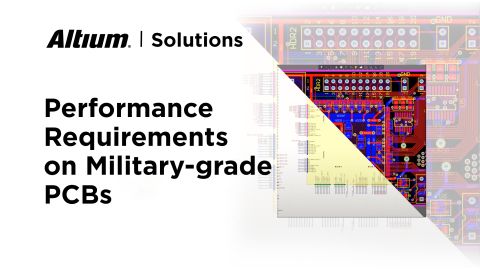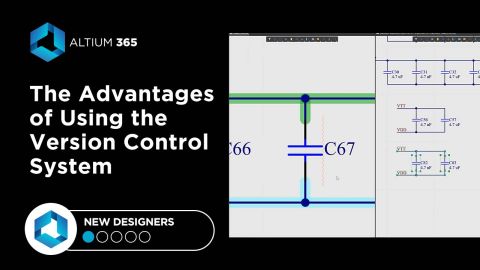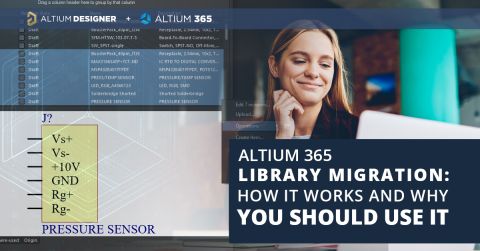Why PCB and Consumer Electronic Data Management Matters

The Challenges of Electronic Data Management
The consumer electronics PCB data management market has always been under pressure to minimize the time to market for new products due to intense competition and continuous innovations that lead to very short product lifetimes compared to other technology-based industries. The time window for releasing an innovative new product and realizing sales income before competitors produce cheaper alternatives and saturate the market is brief. Development times must be kept as short as possible, so these competitors have little warning that a new product will be appearing that they need to analyze, understand, and copy to maximize this window.
PCB Development
Typical consumer electronic data management devices are relatively complex, with lots of functionality packed into as small a space as possible. Complexity requires collaborative working between subject matter experts for each functional block of the overall design. This design process must be trouble-free to meet the short development times needed for a fast time to market. All design elements must seamlessly fit together the first time, as there is little time to resolve incompatibilities or interface disconnects. Underpinning this right-first-time philosophy is a complete, correct, and coherent dataset that all collaborators can access.
PCB Manufacture
The result of the PCB design process is the data used to convey manufacturing and assembling information required by prototyping or production processes. Track, pad, and via layouts, silkscreen overlays, solder masks-all this information is required for PCB manufacture. For multi-layer boards, the volume of data can be vast, and the implications of the slightest error are critical. For example, a single pad or drill hole with slightly wrong coordinates will render the manufactured board unusable.
The Risks
Any errors in the design dataset will translate directly into problems with the product. At best, it may be that a function may be slightly out of spec; at worst, the product may not work. Design errors may come from component datasheet information. For example, manufacturer data may be incorrect, or it may have been wrongly transcribed into the design dataset. Therefore, all manufacturer data should be checked at the source. An experienced designer will spot apparent errors, but the more subtle ones may only be found by comparison with the datasheets from other suppliers.
Design errors may come from having multiple versions of the same component in the design dataset, where collaborating teams may be using different data for the same part. Therefore, the dataset should be structured to avoid duplication or prevent the retention of old data when component data is revised.
Design errors may come when dynamic data affects the design process, and different teams access and utilize the data at other times and hence use different values. Therefore, the presence of dynamic data must be evident and processes put in place to ensure that changes cannot adversely affect static design decisions.
Manufacturing errors may come from a corruption of design data during the transfer to the production process due to incompatibilities or process errors. If not obvious, any error would not be detectable until the first production product was tested.
Manufacturing errors may come from having errors in component physical dimensions such as pin spacing or leg diameter that prevent assembly of the affected component. Operating errors may come from errors in track spacing or width that are not detected during design simulation but materialize through electromagnetic interference, current losses, or excess temperatures in the operating environment.
PCB Data Complexity
The complexity of PCB data management is increasing year on year as component complexity and variety expand to meet market needs. As a result, the necessary resources for maintaining coherent libraries of complex data have enforced the move to using automated processes and third-party services. Monitoring component datasheets for changes would be a full-time task, let alone verifying data and monitoring for duplicate or stale data.
PCB Data Integration
The electronics design process is built around computer-based solutions, from schematic capture to circuit simulation, PCB track layouts, to computer-aided design. This joined-up approach necessitates the PCB design dataset being compatible with design tools. The adoption of product lifecycle management solutions has further extended the compatibility requirements to a new raft of business management tools.
Component Sourcing
A crucial part of the design process is ensuring that the components selected are available at an acceptable price and within the required lead time to support the project timescales. Therefore, the PCB dataset will include dynamic availability and cost data to support program management activities. Ideally, the data management solution should support the analysis of components in use and identify alternate supply sources with price monitoring to allow a switch to a lower-cost option should one become available. The same function should also inform the production processes in the event of supply issues that could hold up manufacturing.
Key Requirements
PCB data management in the PCB design process must be available to everyone who needs it when they need it. In addition, it must be error-free, to date, and everyone accessing the dataset must be presented with precisely the same data. Achieving these requirements by creating a centralized resource sounds easy, but it can be a management challenge with vast datasets of complex data. Redundancy controls are necessary to ensure a single failure cannot prevent the design team from accessing the data, effectively bringing the design process to an abrupt halt. Local copies of a central resource may sound like a simple solution. Still, it creates enormous problems in ensuring the local data is up to date, and consistent across geographically dispersed collaborating teams.
Security controls are required to prevent data from accidentally or maliciously being corrupted or deleted, throwing a spanner in the design process. In addition, with centralized solutions accessed remotely by the design teams, controls need to ensure that network disruption of any sort cannot cut the teams off from the data.
Configuration control is needed to ensure that only authorized persons can change data, that the changes are recorded and verified, and the impact of changes on ongoing design projects can be automatically identified, and the affected parties notified.
Formalized release management functions should manage the creation of production datasets and bills of materials and their transfer to the procurement and manufacturing processes. In addition, this function should include an authorization process that prevents the release of incomplete or unverified data.
Summary
PCB consumer electronics data management is a complex undertaking that, when done correctly, can enhance design accuracy and reduce timescales. However, if implemented incorrectly, any problem has the potential to bring a halt to the design process or result in a product that does not work.
If you’re interested in learning more about Altium Designer for PCB consumer electronics data management, you can contact us or download a free trial and get access to the industry’s best layout, routing, and simulation tools. Talk to an Altium expert today to learn more.











